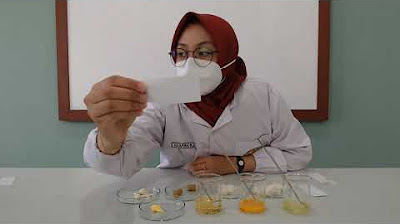I Did 9,567 Lab Tests On ADHD Patients & Learned This
Summary
TLDRIn this video, the speaker shares findings from over 9,000 lab tests conducted on ADHD patients. They discuss various neurotransmitter imbalances, revealing that 66% of ADHD patients suffer from low serotonin, 90% from low phenylalanine, and 99% from low epinephrine. The speaker emphasizes the importance of lab testing to identify specific deficiencies, noting that while dopamine is often blamed, it is not the main issue for most patients. Personalized treatment based on lab results is recommended for effectively addressing ADHD symptoms and improving patient outcomes.
Takeaways
- 😀 66% of ADHD patients suffer from low serotonin levels, which can contribute to issues with motivation and depression.
- 😀 20% of ADHD patients show elevated serotonin levels, leading to symptoms like agitation, stress, and difficulty focusing.
- 😀 38% of ADHD patients have low GABA levels, which are important for mood regulation and managing stress.
- 😀 28% of ADHD patients have elevated GABA levels, which can contribute to high anxiety and agitation.
- 😀 64% of ADHD patients have low histamine levels, which play a critical role in neurotransmitter function.
- 😀 32% of ADHD patients suffer from low taurine levels, an amino acid crucial for neurotransmitter regulation.
- 😀 90% of ADHD patients tested have low phenylethylamine (PEA) levels, a neurotransmitter linked to motivation and focus.
- 😀 52% of ADHD patients have low tyrosine levels, though this is less common than low PEA levels.
- 😀 60% of ADHD patients are low in norepinephrine, which plays a key role in stress management and focus.
- 😀 A surprising 99% of ADHD patients tested were low in epinephrine, impacting stress management and focus.
- 😀 48% of ADHD patients had low dopamine levels, but dopamine deficiency is not always the main issue; 10% of patients also have elevated dopamine levels, which can cause anxiety and stress.
Q & A
What percentage of ADHD patients had low serotonin levels?
-66% of ADHD patients had low serotonin levels according to the lab tests conducted.
Why is serotonin important in the context of ADHD?
-Serotonin plays a crucial role in motivation and mood regulation. Low serotonin levels may contribute to lack of motivation and feelings of depression in ADHD patients.
What is serotonin syndrome and how does it relate to ADHD?
-Serotonin syndrome occurs when serotonin levels are too high. In ADHD patients, 20% had elevated serotonin levels, leading to symptoms like agitation, stress, and difficulty focusing.
How does low GABA impact ADHD patients?
-Low GABA levels (found in 38% of ADHD patients) can lead to difficulties with mood regulation and increased anxiety or stress, which are common symptoms of ADHD.
What role do glutamate and glycine play in ADHD?
-Glutamate and glycine both contribute to GABA production. Deficiencies in glutamine (18% of patients) and glycine (30% of patients) can disrupt GABA production, exacerbating ADHD symptoms.
What was the percentage of ADHD patients with low histamine levels?
-64% of ADHD patients had low histamine levels, which are important for building and modulating neurotransmitters that impact ADHD symptoms.
What is phenylethylamine (PEA) and how does it affect ADHD?
-PEA is an excitatory neurotransmitter involved in the dopamine pathway. Low PEA levels (found in 90% of ADHD patients) can contribute to symptoms like lack of motivation, focus, and memory issues.
What were the findings related to tyrosine levels in ADHD patients?
-52% of ADHD patients had low tyrosine levels, which is a precursor for dopamine. While it's important, it wasn't as significant as deficiencies in phenylethylamine.
What percentage of ADHD patients had low norepinephrine and epinephrine levels?
-60% of patients had low norepinephrine levels, and an astounding 99% had low epinephrine levels. Both of these neurotransmitters are involved in stress management and focus.
What is the common misconception about dopamine and ADHD?
-The common misconception is that low dopamine levels are the main cause of ADHD symptoms. However, only 48% of patients had low dopamine, and 10% had elevated dopamine levels, which can also cause anxiety and stress.
Outlines

Dieser Bereich ist nur für Premium-Benutzer verfügbar. Bitte führen Sie ein Upgrade durch, um auf diesen Abschnitt zuzugreifen.
Upgrade durchführenMindmap

Dieser Bereich ist nur für Premium-Benutzer verfügbar. Bitte führen Sie ein Upgrade durch, um auf diesen Abschnitt zuzugreifen.
Upgrade durchführenKeywords

Dieser Bereich ist nur für Premium-Benutzer verfügbar. Bitte führen Sie ein Upgrade durch, um auf diesen Abschnitt zuzugreifen.
Upgrade durchführenHighlights

Dieser Bereich ist nur für Premium-Benutzer verfügbar. Bitte führen Sie ein Upgrade durch, um auf diesen Abschnitt zuzugreifen.
Upgrade durchführenTranscripts

Dieser Bereich ist nur für Premium-Benutzer verfügbar. Bitte führen Sie ein Upgrade durch, um auf diesen Abschnitt zuzugreifen.
Upgrade durchführenWeitere ähnliche Videos ansehen

Best Nootropics I Currently Use To Help My ADHD Patients

AI Researchers Stunned After OpenAI's New Tried to Escape...

AKI vs CKD / كيف تفرق بين فشل الكلى الحاد والمزمن اذا وجدت وظائف الكلى مرتفعة

Approach to Chest pain

Bahan Berbahaya Ditemukan dalam Produk Kosmetik, Ini Dampaknya Jika Digunakan

Praktikum Uji Makanan - Bu Shafira Ramadhanty Adityaningsih
5.0 / 5 (0 votes)
